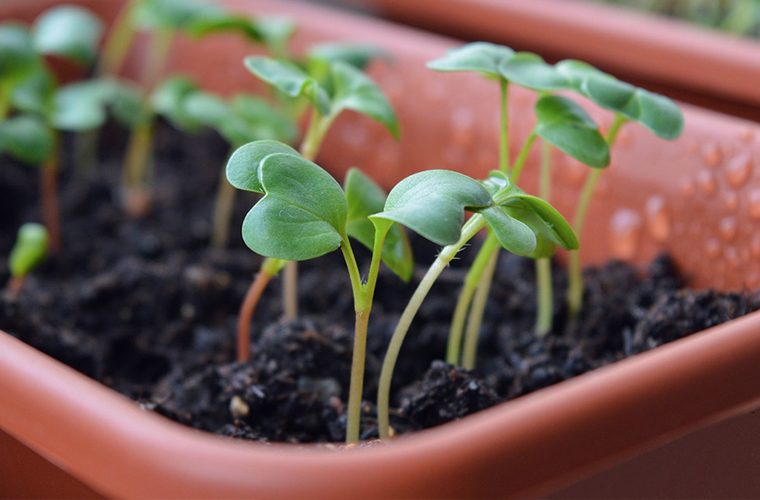You may be familiar with Epsom salts’ incredible healing properties, but did you know that these minerals are also a powerful supplement for your garden? Cheap, natural, and non-toxic with the right Epsom salt, the common name for the magnesium sulfate compound (MgSO4), can be a great help in almost anything you hope to grow. Magnesium sulfate (which resembles common table salt) can help increase nutrient absorption in plants.
What is Epsom Salt?
Epsom salt is a mineral from hydrated magnesium sulfate. It was discovered in an underground spring in England in the early 1600s. Since then, it has been used to treat many diseases in humans, animals, and plants. Chemically, it contains 10% magnesium and 13% sulfur. They are essential nutrients for many plants because of their role in growth and development.
What does Epsom Salt do for Plants?
It provides the best start for seeds
Magnesium increases seed germination, strengthening cell walls, and providing more energy for growth. Sulfur is easily lost during germination, so after planting, one tablespoon of Epsom salts per gallon of water should be poured into the soil. You can also mix one tablespoon of Epsom salts in each pit before planting the seeds. For lawn and flower seeds, spray one cup of Epsom salts per 100 square feet, mixing well with the soil and water. Reapply the Epsom salt bath to seedlings every month during the growing season.
Increase nutrient absorption
Tests indicate that magnesium sulfate can increase cellular absorption of essential minerals, including sulfur, nitrogen, and phosphorus. In a recent study, testers in five states gave pepper plants a standard dose of one tablespoon of Epsom salt for one liter of water twice a month, and most treated plants had thicker foliage and larger plants.
Preventing root shock
Shattered roots need special care. To avoid a root shock, which causes wilting and discoloration of the leaves, mix one tablespoon of Epsom salts for each liter of water and apply to the roots of newly planted plants until saturated. Or you can put one to two teaspoons of dry salt directly into the hole before transplanting a bush or flower.
Stop pests naturally
Instead of using table salt to dry and kill snails and slugs, you banish the parasites with Epsom salts and give the roots and flowers a boost. For general pest control, mix a glass of Epsom salts with five liters of water and spray the foliage. To control slugs and snails, sprinkle dry Epsom salt on the garden around the plant’s base.
Add vitality
Mineral deficiencies can interrupt photosynthesis, turning leaves green and disturbing nutrient absorption. If the mature foliage turns yellow and curled, this may indicate a magnesium deficiency. Try a spoonful of Epsom salt mixed with four glasses of water for each plant foot. Magnesium is well absorbed if applied directly on the leaves.
Improving the taste
Every month during the growing period, mix one tablespoon of Epsom salt in each gallon of water and apply generously to the roots of fruit and nut trees, vines, and berries. Another technique is to use two tablespoons of dry salt three times a year on an area of three meters of roots.
Peppers and tomatoes also benefit from adding Epsom salt to the garden soil. Before planting the seeds, add one to two tablespoons of Epsom salt to the soil in each hole. During the growing season, spray a foliar with two tablespoons of salt into each gallon of water. Apply to the leaves once a month.
Let a lush lawn grow
If your soil has a magnesium deficiency, Epsom salts will help your lawn achieve maximum growth and luxury. Epsom Salt Board recommends three pounds of salt for every 1,250 square meters of garden with a spreader. Spray the salts lightly and spray your yard with a hose or sprinkler system.
Heal your house plants
Epsom salts are pH neutral and soft in plants, even in pots. To increase nutrient intake, mix two tablespoons of Epsom salt with a liter of water and spray the leaves, not the roots, for maximum absorption. Or add salt directly to the soil: one teaspoon of salt for each foot of the plant. Try adding Epsom salt to your home plants every month, following subtle changes in vibration and leaf growth.
Remove tension
Professional stump removal services can cost between $60 and $350, depending on trunk size. However, for one way to remove a tree trunk yourself, you can use Epsom salts to kill the remains of the sawn tree. Drill half an inch of holes with the electric drill into the top of the trunk; these holes should be about half the trunk’s depth and a few inches apart. Then pour the dried Epsom salts into the holes and slowly add water to moisten the salts but not saturate them. Cover the stump with a cloth to reflect the rain and take care of the drying process. The salts will dry the tree for a few weeks, and once the tree has dried, you can dig out most of the stump with an axe and then dig out the root system and throw it away.
Producing abundant roses
Magnesium in Epsom salts is suitable for both new and proven roses as it combines a slowly releasing rose fertilizer with nitrogen, potassium, and phosphorus. Before planting a new rose, add a tablespoon of Epsom salt to the bottom of each pit. For established roses, add a tablespoon of salt to each gallon of water and spray the leaves when they start sprouting in spring and again during flowering.
Conclusion
Epsom salts contain trace elements and are a useful supplement for some plants, especially roses, tomatoes, and peppers. In some cases, they can help improve soil quality, although in other cases it is harmful, such as acid soil. Epsom salts do not contain essential nutrients, so they should not be used as balanced fertilizers.



